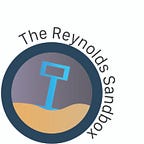Debunking the Popular Flat-Earth Theory
In this story Seanna Simpson looks into five reasons why the flat-Earth conspiracy theory is bogus.
The flat-Earth theory was created by conspiracy theorists and it is mainly the belief that the Earth is flat, rather than spherical, with the Arctic being in the center and Antarctica being the outer-rim of the “flat Earth.”
In the below video from ABC News, a journalist goes to a flat-Earth convention to interview believers to find out why exactly they believe the Earth is flat. Many believe that it is something you need to test yourself to believe. For example, one man tested on a flight whether the plane dipped to compensate for the Earth’s curvature but found that the plane stayed completely parallel to the ground.
Now, let’s get into six ways to debunk this conspiracy theory.
#1 Foucault’s Pendulum
Flat-Earthers do not believe in Earth’s rotation and believe the sun and moon to be above the Earth circling the Arctic. Foucault’s Pendulum debunks that theory because when it is set in motion it will change its course by the end of the day.
Issac Newton’s law of gravity states that “every object in a state of uniform motion will remain in that state of motion unless an external force acts upon it.”
The external force that acts upon the Foucault Pendulum that changes its state of motion is the Earth’s rotation, thus proving that the Earth spins on its axis in orbit.
#2 Sunsets
One belief of Flat-Earthers is that the sun and moon are actually above the Earth and act as spotlights toward Earth.
The easiest way to debunk this is to go outside and watch a sunset or a sunrise. It is obvious that the sun can not be acting as a spotlight when it goes in and out of view in the horizon during dawn and dusk.
If the Earth was truly flat, the sun and moon would always be above us.
#3 A Lunar Eclipse
If the Earth was truly flat, well first of all, eclipses wouldn’t be a thing because it proves the Earth’s orbit around the sun. Second of all, during a lunar eclipse, the moon would not be casted in Earth’s shadow.
The shadow cast on the moon would only be a straight line through the center if the Earth’s shape was flat. However, since it is round it casts a shadow over the entire moon.
According to the American quarterly magazine Popular Science, a lunar eclipse is actually what helped Aristotle figure out Earth’s spherical shape because he realized the phenomenon was Earth’s shadow being casted onto the moon by the sun.
So a lunar eclipse not only proves Earth’s orbit, which Flat-Earthers deny, but it also proves its round shape.
#4 Time Zones
This is another example of proof that shows that the Earth rotates around the sun. For time zones to exist, the Earth must rotate on its axis (which can only happen if its shape is spherical), which allows the sun to shine on different parts of the Earth at different times of our day.
Looking again at the Flat-Earthers claim that the sun acted as a spotlight, if this were true then we would always be able to at least see the sun in the sky. With this theory, just because the light wouldn’t be hitting us doesn’t mean we wouldn’t be able to see the star.
The only explanation for the sun ever going out of view wherever we are in the world is that the Earth orbits it and is rotating on an axis.
#5 Constellations
According to Popular Science, again, Aristotle discovered that, “There are stars seen in Egypt… which are not seen in the Northerly regions.”
Whenever you travel, you will see a different set of stars above you which can only be explained with a round Earth. Like “the sun is a spotlight” theory, if the Earth were flat then we would be able to see every constellation no matter where we are because it would just be above us.
However, since stars and constellations change the further you travel, then you must be traveling along a curved surface for them to disappear and new ones to surface.
